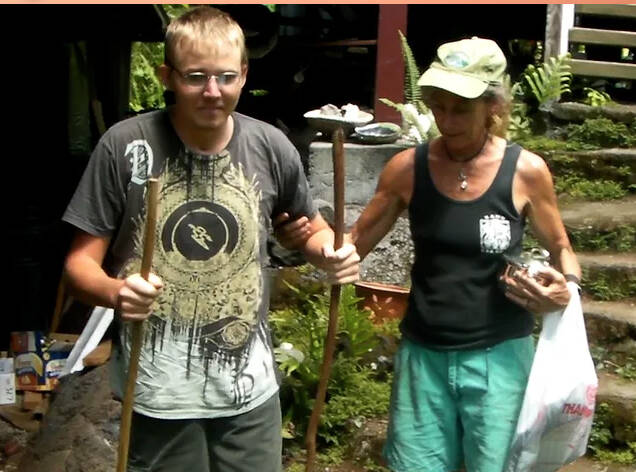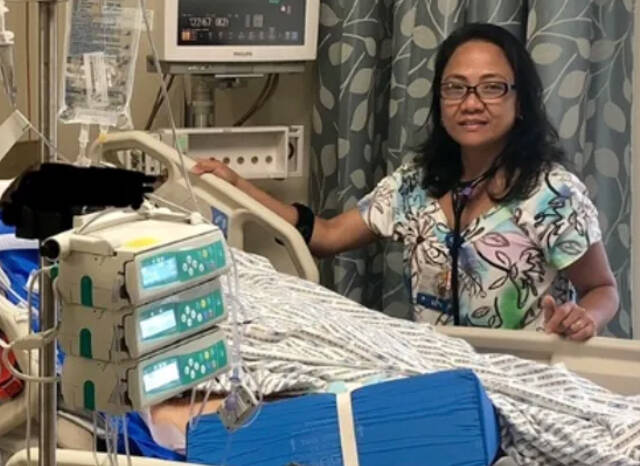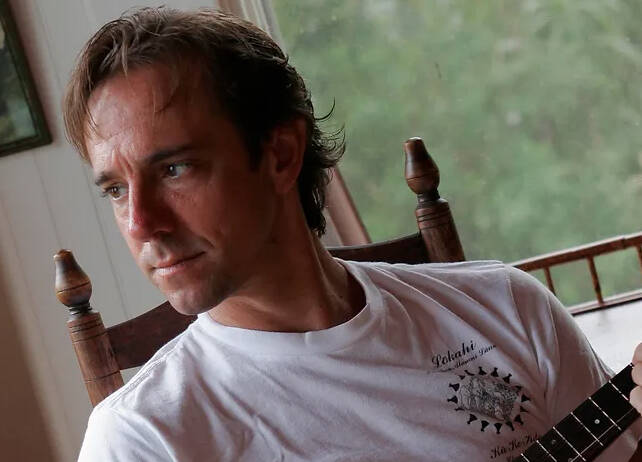Documentary shares stories of rat lungworm patients
Esperanza “Espie” Hilton, a 25-year nurse at Hilo Medical Center, started experiencing headaches back in 2015.
Esperanza “Espie” Hilton, a 25-year nurse at Hilo Medical Center, started experiencing headaches back in 2015.
She took several trips to Urgent Care for what she thought was a minor issue and was diagnosed with stress headaches and prescribed pain medication. But as symptoms worsened, she opted to go to the emergency room, where she was diagnosed with rat lungworm, or Angiostrongylus cantonensis.
ADVERTISING
“Espie’s story is unfortunately more of the norm than the exception, someone who has to seek health care on two or three occasions” said Dr. Claire Panosian Dunavan, producer of a new 53-minute documentary called “Accidental Host — The Story of Rat Lungworm.” “In her case, if she had not had prior knowledge, she would have never been diagnosed and treated.”
Following a spinal tap, the adult form of the parasite was found inside Hilton.
After spending 11 days in the hospital, she was able to return home, and roughly three months later, reported being 90% back to normal.
“I don’t recall how I got it, but in 2015, I loved eating green salads,” said Hilton during a panel discussion on Wednesday. “It took almost three to four months to be able to walk again.”
The documentary also features rat lungworm victim Graham McCumber, a 24-year-old former Big Island resident who experienced stiffness in his neck, fatigue and nausea. The disease spread, and McCumber’s left eye turned inward, giving him double vision. His organs started to fail, and an MRI scan showed the parasite had made its way into McCumber’s brain.
He went into a coma in January 2009 and didn’t say his first words again until April of that year. During his recovery process, McCumber had to re-learn to walk.
“I hope very much that telling these patients’ stories in detail will have a powerful impact on the public,” said Dunavan. “We were very blessed in having a group of patients and health care providers whose experience is so credible and powerful.”
Several other stories are featured in the documentary including a toddler named Noah from Oahu who was placed on a ventilator when the parasite entered his brain, as well as Jacques Pryor, a singer from Maui who suffers from long-term rat lungworm complications.
“As the disease spreads across the mainland and to other countries, our goal is to try and stop these tragedies from happening across the world,” said Dr. Vernon Ansdell during the panel. He also serves on the governor’s task force on rat lungworm. “The only way we’re going to get early diagnosis and treatment, to get the chance to prevent these life-changing consequences that result from this disease, is by educating and giving information to the general public and to medical personnel.”
Because humans typically become infected with rat lungworm by accidentally consuming raw snails or slugs, sometimes hidden on unwashed produce, restaurants throughout the Big Island have adjusted their prep work to combat the illness.
Casey Halpern of Cafe Pesto in Hilo said in the documentary that the restaurant’s policy for washing lettuce has changed to mitigate the spread.
“As a chef, I want to support local farmers,” he said. “We’ve had to make adjustments, and it takes about an hour to wash the lettuce now versus the 15 minutes the old way.”
In addition to prevention, early diagnosis can have a major impact on recovery. To speed up a diagnosis, blood tests are starting to be used instead of a spinal tap.
The National Institutes of Health has had success using the tests, and the governor’s rat lungworm task force also is looking into them.
“My goal at the task force over the 10 years would be to get a blood test that can be used as a diagnostic test in the emergency room so they don’t need a spinal tap,” Ansdell said.
He noted the goal is to prevent the parasite from growing, and any treatment within 2 weeks of infection has a strong impact.
“Before waiting for some of the results, it’s important some people start treatment,” he said. “Not only with corticosteroids but with anti-worm medication to kill them while they’re still tiny.”
Medications include albendazole and pyrantel pamoate.
Dunavan hopes the documentary will increase awareness and educate both health care providers and the public about the severity of the illness.
“My hope is that it will have a huge impact in Hawaii, and there will be ripples in other parts of the U.S. and internationally,” she said. “We want the film to reach as many people as possible with no real barriers.”
The documentary will premiere at 8:30 p.m. HST Thursday on PBS Hawaii.
Email Grant Phillips at gphillips@hawaiitribune-herald.com.






